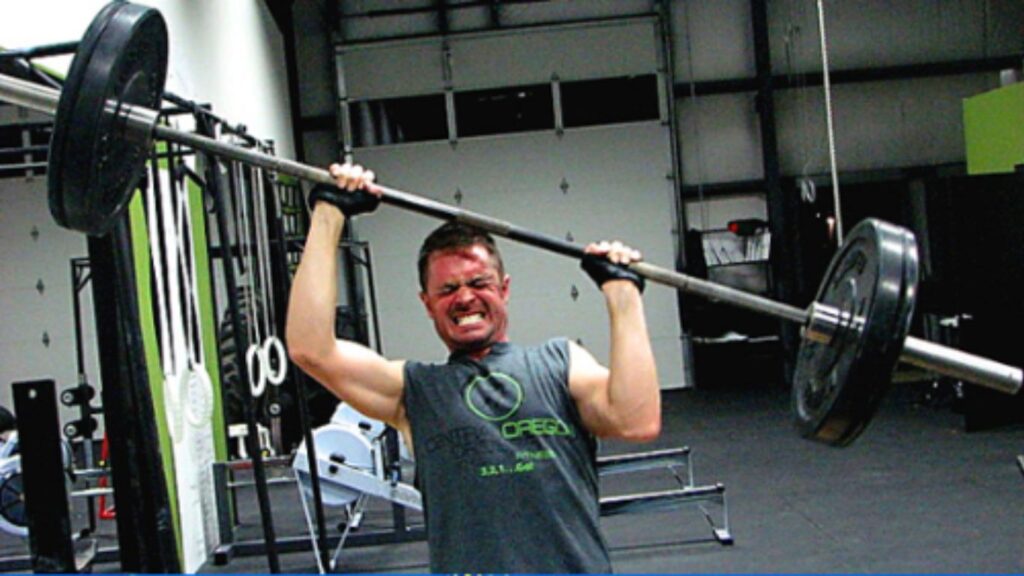Muscle failure occurs when a muscle can no longer generate sufficient force to overcome a specific resistance during an exercise set. This point of physical inability to perform another controlled repetition is often targeted in workouts to maximize muscle growth through increased stress and subsequent adaptation. This blog delves deep into the role of muscle failure in promoting muscle hypertrophy, exploring both scientific insights and practical applications. Through a detailed analysis, we will investigate whether pushing muscles to their limits is a necessary component of an effective strength-training regimen. Readers can expect to gain a clearer understanding of how muscle failure might fit into their personal fitness strategies, the benefits it could offer, and the potential risks involved. By the end of this exploration, you’ll be better equipped to make informed decisions about incorporating or modifying muscle failure techniques in your workout routine.
Is Muscle Failure Important for Muscle Growth? A Deep Analysis
Knowing Muscle Growth
Muscle hypertrophy is the process of increasing muscle mass through the growth of muscle fibers, a response primarily triggered by resistance training. This process involves the micro-damage of muscle fibers during exercise, which stimulates the body’s repair mechanisms to not only repair but also enhance the muscle fibers’ size and strength to better handle future stress.
The biological process of muscle repair and growth is facilitated by satellite cells located on the periphery of muscle fibers. These cells are activated in response to the stress of training, migrating to the damaged areas where they donate nuclei. This addition of nuclei increases the muscle fiber’s capacity to synthesize protein, thereby enlarging the muscle. Essential hormones, such as human growth hormone (HGH) and testosterone, also surge during recovery, further aiding in muscle development.
Several factors significantly influence the effectiveness of muscle hypertrophy:
- Nutrition: Adequate protein intake is crucial as it provides the building blocks for new muscle tissue. Carbohydrates replenish glycogen stores used during exercise, while fats support overall hormone function.
- Rest: Quality sleep and rest days are essential for allowing muscle recovery and growth.
- Type of Exercise: Variations in exercise type, intensity, and volume all affect hypertrophy. Resistance exercises that involve multiple joints and muscles tend to be most effective in promoting muscle growth.
What is Muscle Failure?

Muscle failure in resistance training is the point during an exercise at which muscles can no longer produce sufficient force to lift a given weight for one more controlled repetition. This occurs when muscles are so fatigued that they temporarily lose the ability to generate the necessary power. Muscle failure typically happens after successive sets of an exercise, where the muscle is pushed to its maximum limit, often during the final repetitions when form begins to deteriorate due to exhaustion.
Differentiating between muscle fatigue and complete failure is crucial. Muscle fatigue refers to a reduction in the muscle’s power output that can occur even at the beginning of a workout, leading to a decrease in performance but not necessarily stopping an activity. Complete muscle failure, however, is when the muscle has reached its absolute limit and cannot perform another repetition of an exercise without risking injury or significantly compromising form.
The Role of Muscle Failure in Muscle Growth
Muscle failure is often considered a potent catalyst for muscle growth, grounded in the theory that maximal muscle fiber recruitment leads to significant hypertrophy. The rationale is that training to failure ensures the engagement of both slow-twitch and fast-twitch muscle fibers, which might not be fully utilized during less intense training sessions. This comprehensive activation is believed to trigger extensive muscle repair and growth as a response to the high level of stress imposed.

Research supports this theory to a degree. A study published in the “Journal of Applied Physiology” found that training to muscle failure can elicit greater increases in muscle size and strength compared to non-failure training, particularly in untrained individuals. The study suggests that the intense stress and subsequent recovery required when muscles reach failure stimulate a more robust anabolic response.
However, expert opinions on training to muscle failure are mixed. Dr. Brad Schoenfeld, a renowned fitness expert, argues that while muscle failure can be a useful tool, it is not necessary for all individuals. He emphasizes that “muscle failure is just one method of achieving the necessary stimulus for muscle growth. It can be very effective, especially when used judiciously, but it’s not mandatory for success.”
This indicates that while muscle failure might enhance hypertrophy, it should be integrated thoughtfully into a training program, considering individual recovery capabilities and overall training goals to avoid potential overtraining and injuries.
Pros and Cons of Training to Muscle Failure
Benefits of Training to Muscle Failure:
- Increased Strength: Pushing muscles to failure can lead to greater strength gains as it forces the body to adapt to extreme stress.
- Enhanced Muscle Size: Maximum fiber recruitment during failure-targeted training sessions promotes significant muscle hypertrophy.
- Improved Muscular Endurance: Regular training to failure enhances the muscle’s ability to sustain prolonged exertion under stress.
Potential Drawbacks of Training to Muscle Failure:
- Higher Risk of Injury: The intense strain on muscles and joints at the point of failure increases the likelihood of injuries.
- Longer Recovery Times: Muscles pushed to their limits require more downtime to repair, which can disrupt regular training schedules.
- Mental Fatigue: Consistently training to failure can be mentally exhausting, potentially leading to burnout.

Recommendations on Frequency of Training to Muscle Failure:
- Moderation is Key: Limit training to muscle failure to once per muscle group per week to allow for adequate recovery.
- Vary Intensity: Integrate lighter sessions or focus on different muscle groups in between high-intensity failure workouts.
- Monitor Response: Pay close attention to how your body responds to failure training and adjust frequency accordingly to avoid overtraining and ensure continual progress.
Final Thoughts:
Training to muscle failure can indeed be a powerful tool for muscle growth, offering benefits like increased strength, enhanced muscle size, and improved endurance. However, it’s not without its risks, such as potential injuries and longer recovery periods. The key is to use this method judiciously—integrating it strategically into your workout regimen while paying close attention to your body’s responses. Not everyone may need to train to muscle failure to see gains, and thus, it should be considered as one of many techniques available to optimize muscle growth, tailored to individual goals and capabilities.
Also read: From Stability to Stamina: How Leg Muscle Training Influences Whole-Body Health
